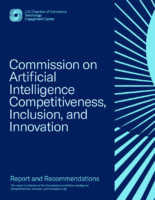I have a new R Street Institute policy study out this week doing a deep dive into the question: “Can We Predict the Jobs and Skills Needed for the AI Era?” There’s lots of hand-wringing going on today about AI and the future of employment, but that’s really nothing new. In fact, in light of past automation panics, we might want to step back and ask: Why isn’t everyone already unemployed due to technological innovation?
To get my answers, please read the paper! In the meantime, here’s the executive summary:
To better plan for the economy of the future, many academics and policymakers regularly attempt to forecast the jobs and worker skills that will be needed going forward. Driving these efforts are fears about how technological automation might disrupt workers, skills, professions, firms and entire industrial sectors. The continued growth of artificial intelligence (AI), robotics and other computational technologies exacerbate these anxieties.
Yet the limits of both our collective knowledge and our individual imaginations constrain well-intentioned efforts to plan for the workforce of the future. Past attempts to assist workers or industries have often failed for various reasons. However, dystopian predictions about mass technological unemployment persist, as do retraining or reskilling programs that typically fail to produce much of value for workers or society. As public efforts to assist or train workers move from general to more specific, the potential for policy missteps grows greater. While transitional-support mechanisms can help alleviate some of the pain associated with fast-moving technological disruption, the most important thing policymakers can do is clear away barriers to economic dynamism and new opportunities for workers.
I do discuss some things that government can do to address automation fears at the end of the paper, but it’s important that policymakers first understand all the mistakes we’ve made with past retraining and reskilling efforts. The easiest thing to do to help in the short-term is clear away barriers to labor mobility and economic dynamism, I argue. Again, read the study for details.
For more info on other AI policy developments, check out my running list of research on AI, ML robotics policy.


 The Technology Liberation Front is the tech policy blog dedicated to keeping politicians' hands off the 'net and everything else related to technology.
The Technology Liberation Front is the tech policy blog dedicated to keeping politicians' hands off the 'net and everything else related to technology.